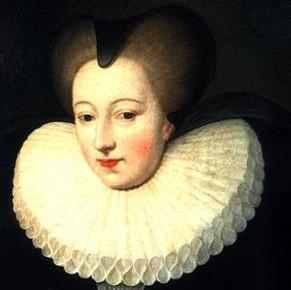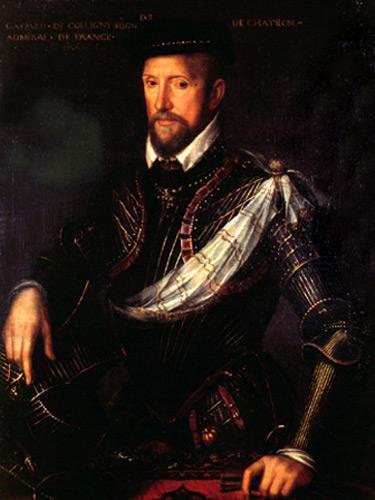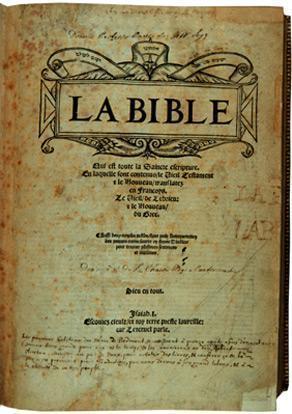Claude du Chastel (1554-1587)
A rich Huguenot heiress coveted by a Catholic nobleman, or Romeo and Juliet during the wars of religion…
An ill-considered love story
Claude du Chastel, a rich Huguenot heiress, was an orphan and brought up in the Combourg residence (later immortalised by Chateaubriand). In 1565, at the age of twelve, she publicly confessed and taught the Huguenot faith and dedicated the rest of her life to it.
This rich heiress was a much desired match. Charles de Gouyon de la Moussaye fell in love with her when she was only twelve years old but both their families disapproved of this attachment.
Claude’s Huguenots tutors were opposed to a Roman Catholic spouse. Charles’s Catholic parents totally disapproved of their son’s leaning towards Protestantism. They could tolerate his listening to sermons but considered it sheer madness to get involved in military actions on behalf of the Reformation.
Claude’s tutor was well ahead of his time and left her to make her own decision. However, Claude would be a sorry figure for a future husband of the Catholic party. Charles was willing to convert to Protestantism, but his father was likely to disinherit him, thus making the marriage impossible.
Charles’s romantic and unfailing courtship got the better of Claude who accepted to marry him.
Should the wedding be Catholic or the Protestant ?
Claude would only marry in the Reformed Church. The La Moussaye family agreed. However, an exemption from King Charles IX was needed, but the latter refused to grant it.
In the meantime, the story of their love spread around the provinces. The king was moved and felt sympathy for the couple. He requested the wedding ceremony should take place at the court. On May, 20, 1571, the bishop of Saint Malo blessed the union in the chapel of the Gaillon castle. The bride was dressed in gold clothes and wore the crown jewels.
They lived happily ever after...
Back in Brittany, the couple publicly professed themselves as Calvinists. Claude and Charles lived as members of the country noble and refrained as much as possible from engaging in military action although they provided fugitive pastors and Huguenot lords with a safe haven.
Charles refused the attributes of the court. He went to Paris for Henri de Navarre’s wedding, but returned to his wife before the Saint Bartholomew’s day massacre.
The couple acquired a large number of properties in Brittany and had eleven children. Claude, who was very pious, taught them the psalms and catechism. She died giving birth to her last child in 1587.
Charles then enrolled in the Bearn regional army to fight against the Duke of Mercoeur.
In the last years of his life, he wrote his « Brief discourse », a testimony in memory of Claude de Chastel and a lesson of Huguenot faith for his sons and daughters.
Bibliography
- Books
- CARLUER Jean-Yves, Protestants et bretons, la mémoire des hommes et des lieux, Éd. La Cause, Paris, 1993
Associated notes
-

St. Bartholomew's Day (24th August 1572)
Charles IX had tried to reconcile the two religious parties, but when this failed, he was driven by the Guise family to authorize the Catholics to assassinate the Protestant leaders; the situation... -

Jeanne d'Albret (1528-1572)
She became a convert of Protestantism and made it the official religion in her kingdom of Navarre. -

Catherine de Parthenay (1554-1631)
Staunch supporter of the defence of the city of La Rochelle against Richelieu in 1627-1628, she was a staunch Huguenot and likewise a poet, a playwright and a mathematician. -

Gaspard de Coligny (1519-1572)
Gaspard de Coligny born in the influential Châtillon family, was naturally at the service of the King of France. However, after being made prisoner at the siege of Saint Quentin,... -

Olivétan (1506-1538)
Olivétan is well-known for his French translation of the Bible, referred to as Olivétan’s Bible. It was the first Bible ever to be translated into French from the original Hebrew...
